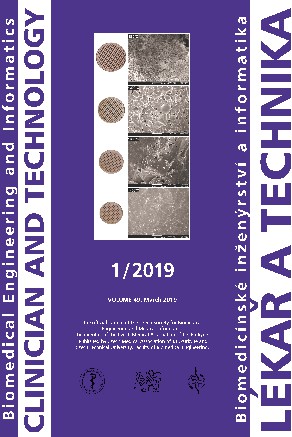APPLICATION OF SENSORY SYSTEMS TO MOVE DOGS WITH VISUAL IMPAIRMENT
Keywords:
eye diseases of dogs, 3D scanner, 3D printer, position sensorsAbstract
This study focuses on the sensory systems application in dog´s movements with visual impairment. The aim of this work was realization and design the production of orthotic instrument for the blind dog because of there has been nothing similar at the market available yet. The work has used non-invasive detection of the animal´s body measure. An instrument has been generated by using CAD software. By help of 3D printer, the virtual model has become real. The product has been cleansed and a system for gripping and for eye protectors has been applied. By studying different types of sensor for application we have decided to choose an ultrasonic position sensor which is harmless for dog´s hearing. A sensor has detected an approaching obstacle by using the Arduino platform. The obtained results and production of this device can be helpful in innovative development of finding new ways in animal´s rehabilitation as well as in rehabilitation of people.Downloads
Published
Issue
Section
License
Copyright (c) 2019 Jana Klímová

This work is licensed under a Creative Commons Attribution 4.0 International License.
Authors who publish with this journal agree to the following terms:
- Authors retain copyright and grant the journal right of the first publication with the work simultaneously licensed under a Creative Commons Attribution License (https://creativecommons.org/licenses/by/4.0/) that allows others to share the work with an acknowledgment of the work's authorship and initial publication in CTJ.
- Authors are able to enter into separate, additional contractual arrangements for the non-exclusive distribution of the journal’s published version of the work (e.g., post it to an institutional repository or publish it in a book), with an acknowledgment of its initial publication in this journal.
- Authors are permitted and encouraged to post their work online (e.g., in institutional repositories or on their website or ResearchGate) prior to and during the submission process, as it can lead to productive exchanges.
CTJ requires that all of the content of the manuscript has been created by its respective authors or that permission to use a copyrighted material has been obtained by the authors before submitting the manuscript to CTJ. CTJ requires that authors have not used any copyrighted material illegally, as for example a picture from another journal or book, a photo, etc. It is the author’s responsibility to use only materials not violating the copyright law. When in doubt, CTJ may ask the authors to supply the pertinent permission or agreement about the use of a copyrighted material.
The opinions expressed in CTJ articles are those of authors and do not necessarily reflect the views of the publishers or the Czech Society for Biomedical Engineering and Medical Informatics.


